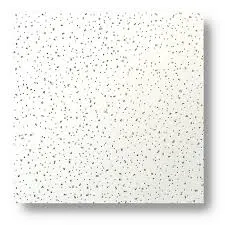Dec . 24, 2024 12:31 Back to list
tee bar ceiling grid
The Tee Bar Ceiling Grid An Essential Element in Modern Architecture
In the realm of modern architecture and interior design, functionality meets aesthetic appeal in various ways. One such vital component that often goes unnoticed is the tee bar ceiling grid. This system has transformed how spaces are designed, providing versatility and practicality while maintaining a contemporary look. Understanding the tee bar ceiling grid's components, advantages, and applications can illuminate its significance in architectural designs.
What is a Tee Bar Ceiling Grid?
A tee bar ceiling grid, also known as a suspended ceiling or drop ceiling, consists of a framework made from lightweight materials, typically metal or vinyl, which supports ceiling tiles or panels. The tee refers to the T-shaped metal bars that form the grid structure, creating a suspended framework from which tiles can be hung. This system allows for the placement of various ceiling materials, including acoustic tiles, gypsum boards, or decorative panels.
Components of a Tee Bar Ceiling Grid
The fundamental components of a tee bar ceiling grid include main runners, cross tees, wall angles, and ceiling tiles.
1. Main Runners These are the primary support beams installed parallel to one another and are usually spaced 4 feet apart. They bear the weight of the ceiling system and are fixed to the ceiling joists or other structural elements.
2. Cross Tees These elements connect the main runners, forming a grid pattern. They come in various lengths to cater to different room sizes and configurations.
3. Wall Angles Installed along the perimeter of the ceiling, wall angles provide support to the grid and define its edges, creating a crisp finish.
4. Ceiling Tiles Diverse materials and designs allow for a range of aesthetic choices, including acoustical, decorative, or moisture-resistant tiles.
Advantages of Tee Bar Ceiling Grids
The tee bar ceiling grid system is popular among architects and designers for several reasons
1. Flexibility One of the most significant advantages of a tee bar ceiling grid is its flexibility. The grid can accommodate various ceiling heights and configurations, making it ideal for both commercial and residential spaces.
tee bar ceiling grid

2. Access to Utilities This ceiling system allows easy access to plumbing, electrical fixtures, and HVAC elements, which can be crucial for maintenance and renovations. Instead of tearing down a ceiling, tiles can be removed quickly for inspections or repairs.
3. Acoustic Performance Acoustic tiles can be integrated into the grid to improve sound absorption, which is particularly beneficial in spaces like offices, schools, and healthcare facilities where noise reduction is essential.
4. Aesthetic Appeal With a variety of designs, colors, and finishes available, tee bar ceilings can enhance the visual appeal of a space. They can complement overall design themes, whether modern, traditional, or industrial.
5. Energy Efficiency Some ceiling tiles are designed to improve energy efficiency by reflecting light and enhancing illumination, reducing the need for excessive artificial lighting.
Applications of Tee Bar Ceiling Grids
The versatility of the tee bar ceiling grid allows it to be employed in various settings.
- Commercial Spaces Offices with open floor plans benefit from the grid's accessibility and acoustic properties, creating a comfortable work environment. Retail spaces utilize the grid to install lighting and signage seamlessly.
- Educational Institutions Classrooms and lecture halls often rely on tee bar ceilings to manage sound and distribute light effectively, ensuring a conducive learning atmosphere.
- Healthcare Facilities Hospitals and clinics benefit from the grid's easy access for maintenance and its ability to accommodate specialized ceiling tiles that meet health and safety standards.
- Residential Use Homeowners have begun embracing suspended ceilings in basements, kitchens, and living areas for both practical and decorative purposes.
Conclusion
The tee bar ceiling grid plays an invaluable role in modern architectural design, marrying form and function. Its ability to accommodate a variety of landscapes—whether commercial, educational, healthcare, or residential—makes it an essential component in creating versatile and appealing spaces. As the architectural landscape continues to evolve, the tee bar ceiling grid will undoubtedly remain a key feature in optimizing both visual appeal and functional efficiency.
-
Quality Ceiling Trap Doors & Access Panels | Easy & Secure AccessNewsAug.30,2025
-
Durable Ceiling T Grid Systems | Easy InstallationNewsAug.29,2025
-
PVC Gypsum Ceiling: Durable, Laminated Tiles for Modern SpacesNewsAug.28,2025
-
Pvc Gypsum Ceiling Is DurableNewsAug.21,2025
-
Mineral Fiber Board Is DurableNewsAug.21,2025
-
Ceiling Tile Clip Reusable DesignNewsAug.21,2025







